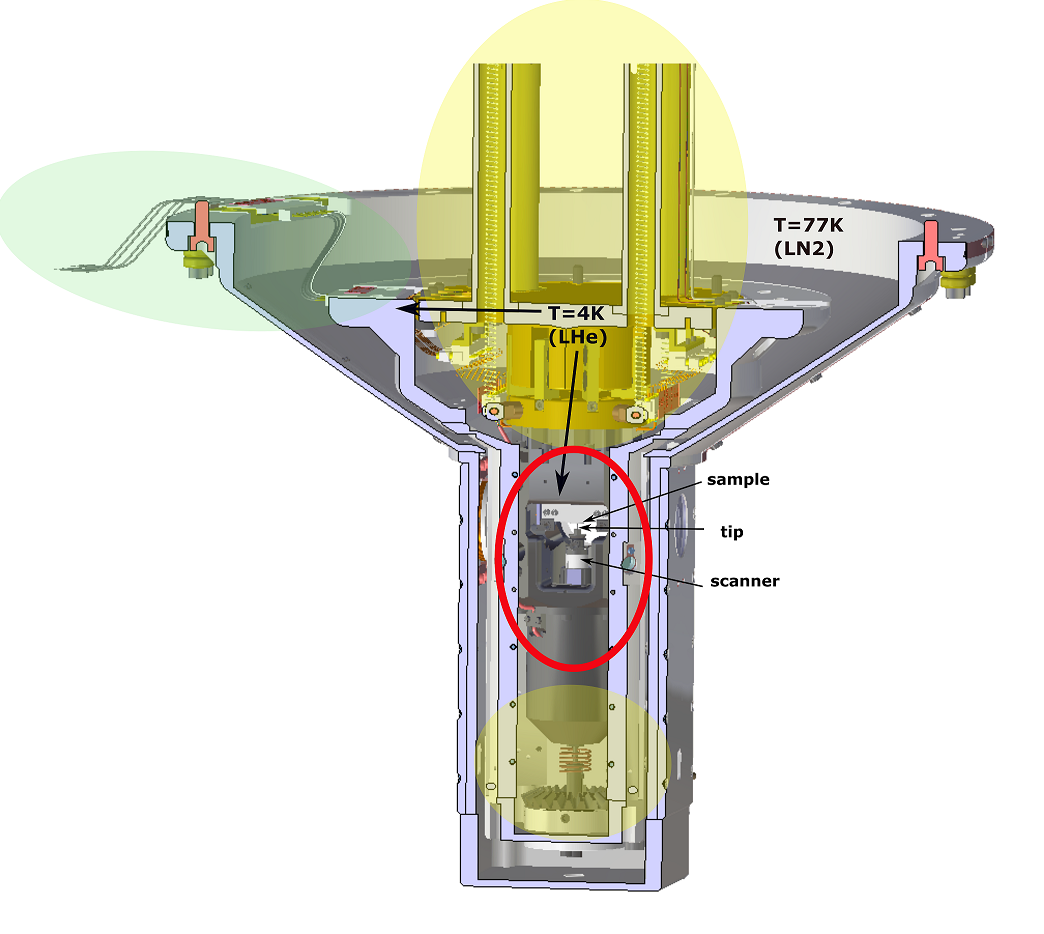Low Temperature SFEMPA
M. Demydenko, T. Michlmayr, U. Ramsperger, A-K. Thamm
A low-temperature version of the scanning field emission microscope with polarization analysis is under construction. Our aim is to detect domain walls in thin films with an improved signal-to-noise ratio achievable through the low-temperature version of SFEMPA. Furthermore, the new instrument can be used to study the magnetic behaviour of materials, which are not stable at room temperature (like chromium).
The new system consists of a measurement chamber containing the SFEM, a bath cryostat on top and a Mott Detector for spin polarization analysis. The whole scan head (including tip and sample) is cooled down to 4 K (red circle in Figure 8) and shielded with two insulating panels (Figure 8, grey) to prevent the heating of the scan head during a measurement. Tip and sample can be replaced while the system is cooled down. Four springs (Figure 8, upper yellow part) along with an eddy-current damping system provide a well-feathered SFEM at room temperature, while the spring at the bottom (Figure 8, bottom yellow part) enables the damping at low temperature.
Since in such a system regions with room and helium temperature coexist electrical connections need to be thoroughly isolated. To this end, electrical wiring going from one temperature region into another are bridged by connecting plates capable to adapt and manage such temperature differences (see Figure 8, green part).
